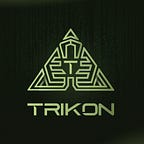What are On-Chain Games?
Gaming and cryptocurrency integration have always shown promise, but early attempts at combining the two fell short, focusing too much on finance. Now, experienced game developers are leading a new wave of on-chain games that prioritize user engagement and leverage blockchain’s power.
This exciting shift in on-chain gaming is made possible by blockchain’s ability to create permissionless and persistent systems that operate independently of their creators. For game designers, this concept of games running and evolving independently of their creators, known as “infinite games,” sparked an irresistible allure.
To understand the possibilities and explore its current landscape, we are bringing a new series on on-chain gaming. The first part of this series will lay the foundation by defining what exactly are on-chain games.
What Does Being On-Chain Mean?
Being on-chain in the realm of games involves embracing the fundamental principles and techniques of blockchain application development. It signifies a departure from the traditional web2 gaming landscape.
In on-chain games, the blockchain serves as the ultimate source of truth for all game data. Unlike the conventional approach of using a proprietary server, on-chain games store their critical data directly on the blockchain. This extends beyond asset ownership, encompassing various game elements.
By leveraging the programmable nature of the blockchain, these games can take full advantage of its transparent and interoperable data store. The game logic and rules are implemented through smart contracts in on-chain games.
Moreover, on-chain games adhere to open ecosystem principles. The game contracts and accessible game client are open-source, allowing third-party developers to customize and create unique gameplay experiences. This inclusivity encourages the growth of a vibrant and collaborative community that can contribute to the game’s evolution.
A distinguishing characteristic of on-chain games is their client-agnostic nature. This implies that even if the core-developer-provided client were to disappear, the game would remain playable.
Lastly, on-chain games embrace the concept of real-world value digital assets. Blockchains provide a native API for value, and digital assets within the game are inherently interoperable with cryptocurrencies. This paves the way for innovative incentive structures that reward both players and developers, fostering engaging and rewarding experiences.
On-Chain Spectrum of Blockchain Games
When it comes to on-chain games, there exists a spectrum that categorizes them based on the extent to which game elements are made live on the blockchain. Let’s explore the three approaches within this spectrum:
Fully On-Chain Games
This approach revolves around using the blockchain as a decentralized game server, with all players accessing and contributing to a shared state on-chain. The shared state encompasses not just asset ownership but all aspects of the game state.
While well-suited for turn-based games with relatively fewer state updates per session, it enables features like persistence, censorship resistance, and community-owned development. Examples of games employing this approach include Dark Forest and 0xMonaco.
User Assets Live On-Chain
In this model, user assets reside on-chain, while the game loops operate off-chain. The game server indexes the on-chain asset state at the session’s beginning, and state transitions occur off-chain. Updates are relayed back on-chain only when they materially impact the asset state or at the end of a session.
This approach strikes a balance between trust lessness and speed, making it suitable for feature-rich games with a higher frequency of moves per player, such as MMORPGs and FPS games. Performant infrastructure, including rapid indexing and data relay systems, is essential for this approach.
Optional Cosmetic Mints
In this approach, games resemble their traditional counterparts, where asset ownership and state updates are recorded in an off-chain game database. However, users have the option to mint their current in-game assets as NFTs on-chain for trading purposes.
Additionally, loyalty or season passes may exist as on-chain NFTs, facilitating access control based on ownership. This approach minimizes friction for users, as it aligns with the familiar gaming experience, while still offering the option to engage with on-chain assets and ownership.
Closing Thoughts
There is no right or wrong on-chain approach for games because nothing is proven yet. What matters now is figuring out which approach brings the most unique experience for gamers. Having only asset ownership may be enough for a certain target group while others would prioritize composability of games.
The possibilities of on-chain gaming are definitely exciting but the challenges to build something completely on-chain are many. In our upcoming articles, we will break down what those are and understand what kind of infrastructure is needed to support such games.
If you’re a gamer seeking a thrilling and seamless experience with Web3 games, buckle up and join us on an epic journey through the Trikon gaming platform!
Stay connected and dive into the excitement by following us on Instagram, Twitter, Telegram, and Discord. Unveil the limitless possibilities at trikon.io, where gaming dreams come true!
